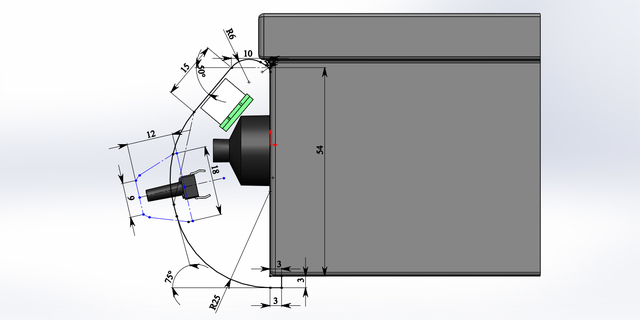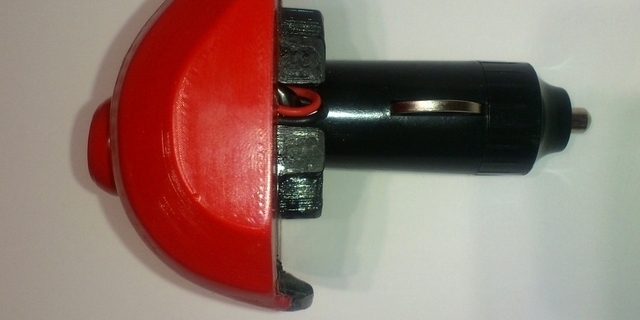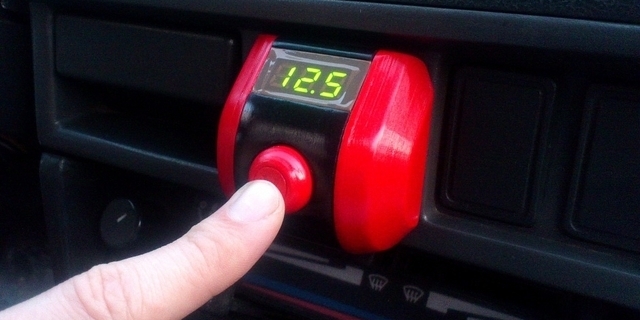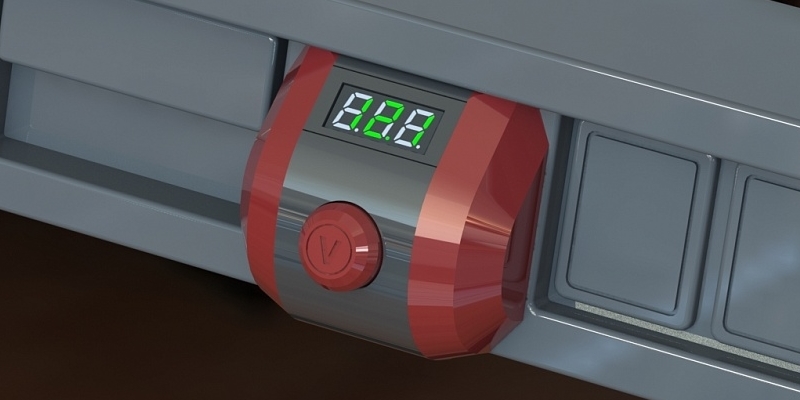Posted on: July 5, 2018, | By Candy, WayKen Marketing Manager
We are living in an era when new products are entering the market every other minute, or their modifications. How is the manufacturer supposed to keep up with this pace? The competition is setting new records on product development cycles. Take Apple, for example. They were making one model of a phone yearly just a few years ago. Now, as we know, they are making 3 or even 4. What does it mean? First of all, they have to design a new model at least three times as fast. It also means that they have less time to test it.
Due to the development of the 3D-modeling technologies, a lot of smaller companies choose to forgo the product design prototyping phase, using visualization methods instead. Truly, this saves you some time in regards to development but you will lose that much more in case any kind of mistake arises. And be sure, it will happen. But well, any kind of idea is expressed much better with an example. So, let me illustrate my point with a case study in the automobile industry.
What The Case Is About?
I decided to make a redundant voltmeter for cars so that it could be fitted into the lighter. Newer models have it but a lot of older ones don’t. It is a useful device to monitor the performance of the automobile circuits. It is especially good for determining whether you should do something about your generator. Useful in some cases, it is not needed all the time, so making it redundant is a good choice.
Modeling And Designing
All the lighter ports in automobiles are standard, as well as a small area around them, so I modeled a representation of a car front panel with all the right dimensions using Solidworks. The display and the electronic parts, as well as the port, I decided to buy the first prototype. Then, using the 3D modeling tools, I got the purchased parts added to the panel and constructed a rough enclosure sketch.

Refining And Visualizing
The final design of the voltmeter had to look minimalistic and stylish, I decided that I wanted nothing to do with glue or screws, so I made some clasps that fitted the holes in the different pieces of the enclosure. Now, after a little bit of tinkering, I got the form that I wanted. A red-black smooth minimalistic design with one button.
I decided that it was possible for the consumer to forget the device in the lighter port. And it would be extremely bad for it to waste the accumulator charge when its purpose is to prevent situations where the accumulator is empty. So, the voltmeter works only when the button is pushed.
Having completed the design, I rendered the model with the Solidworks visualization package. Everything seems to fit perfectly.
A Development Crossroads
Now that the design was done, I had a few options.
Firstly, I could just trust my skills and order the injection molding forms to be done. Now, if you are not acquainted with injection molding, let me oblige. It is a plastic forming process, where you spray molten plastic under high pressure into a steel press-form. Since the form is very precise and has the good surface finish, made of durable steel, you can get a large amount of identical high-quality parts made very fast.
However, bringing changes into the design at this stage is a very bad idea. Worst case scenario, you will have to remake the press-form. Now, for your understanding, press-forms are usually made of high-grade steel. The pattern if the part is machined on a CNC milling center to a very close tolerance and a very fine surface finish ( The last operation often involves polishing). Due to that, press-forms cost at least 800$ a piece minimum. There are lots of prototyping shops, where you can get those things done fast and good.
This choice comes down to: if you did everything correctly, that’s it, you are ready to sell. If you’ve made a mistake, you lose several thousand and a lot of time.
A Safer Path
The second path is to manufacture a prototype. There are quite a few methods of prototyping.
You can order the thing to be machined. Modern machine tools can be programmed to manufacture new parts quite fast. The precision and the surface finish is excellent but the method is on the more expensive side since programming requires trained professionals after all.
You can 3D-print your device. This is a very popular method of plastic prototyping right now. 3D-printing or additive manufacturing is a process where you slice the model of the part into cross-sections atop one on other. Then, you deposit and cure molten plastic layer by layer in accordance with the current cross-section of the part. As a result, you can get a high-quality part of any complexity in very short order. And the best thing, you don’t need any complex tools or professional manufacturing engineers. The process is mostly automatic.
So, I could spend some more time and get one or two versions of my device printed to see if it fits the actual slot in the car. That way, I’ll be sure that everything works. So, I’ll lose some money in prototyping for sure and will have to order the injection molds anyway. But I’ll lose only a few hundred, not a few thousands.
Prototyping
So, I decided to print my part after all. The plastic was chosen to be ABS, the most widespread in the market and quite cheap to make parts from. There are a lot of 3D-printing methods, but I decided to choose the simplest one: Fused Deposition Modeling. The plastic is deposited in the form of a thread and is laid in the form of the corresponding cross-section.

Allowing For Errors
So, after a few days, I got my prototype. It turned out that I had made the right choice because the device did not fit the port. Well, it did basically, but it had a setup at the backside, which got in the way. Apart from that, I got off by 5 mm in one area of the part so it didn’t fit the panel.
Well, if I had not chosen to get the injection molds done, I would’ve lost a lot of money but fortunately, that did not happen, so I corrected my mistakes and got the final working prototype. If I hadn’t, I wouldn’t be able to finish the product properly. This is why prototyping in product design is so useful.

We–Wayken with prototyping and manufacturing technologies has many years experience in the field of designing new and innovative products, which can greatly reduce the produce time from concept to production. Besides, our own Prototype Engineers and Project Managers with extensive bckgrounds in industrial design prototyping. Therefore, help you to produce high-quality product design prototype on time is not a dream.





